Questions & Answers
Here are some common questions and answers about the effects of caribou habitat protection in Alberta.
Aren’t the federal and some provincial governments rushing to develop caribou range plans?
Won’t caribou plans deprive indigenous and other local communities of socio-economic development opportunities?
Isn’t the problem facing caribou really just climate change?
Aren’t all the wolves and other predators a bigger problem than habitat?
The root cause of excessive caribou predation by wolves and other predators is fragmented and degraded habitat in caribou ranges. Cutblocks and poorly reclaimed seismic lines and well pads stimulate deer, moose and wolf populations. This creates easy access to caribou by predators and robs caribou of their ability to avoid overlap with predators they’ve co-existed with for thousands of years. In Alberta’s most disturbed ranges, the dire measure of predator culls can only be justified as a temporary, last resort measure combined with strong habitat protection and restoration.
Shouldn’t it be good enough for companies to follow ‘best practice’ operating guidelines?
Don’t current forestry practices require that every hectare that is harvested be regenerated?
Isn’t fire a bigger cause of habitat loss than human disturbance?
Isn’t it hopeless, if caribou can’t even make it in the pristine Banff and Jasper national parks?
Isn’t it hopeless, if caribou are declining even in Caribou Mountains Wildland Provincial Park?
Habitat disturbance in the Caribou Mountains range explains the declines. As of 2011, fire disturbance affected 44% of the range, and human-caused disturbance affected 23%, for a total of 57% disturbed. The best science suggests caribou need at least 65% undisturbed habitat to have even a 60% chance of being self-sustaining. For the Caribou Mountains population, it’s important to
- avoid new human disturbance in their range,
- suppress fires,
- carefully manage access, and
- support jobs to properly reclaim as much human-caused disturbance as possible, including reclaiming old unused seismic lines.
Won’t the three proposed protected areas recommended by mediator Denhoff’s 2016 report shut down northwest communities?
The three proposed northwest Alberta protected areas (in Forest Management Units F10, F20 and P8) do not overlap with existing forestry. Unlike other public lands, protected areas can be designed to have no new industrial forestry impacts, and to have an energy industry surface footprint that is limited to existing tenures and then phased out. The proposed protected areas will achieve the most protection of caribou range for the least socio-economic cost to northwest communities. Both caribou and resource jobs will disappear if resource management does not change quickly to ensure healthy forests for generations to come.
If Alberta grizzlies can recover on ‘working landscapes,’ then can’t caribou as well?
Aren’t caribou plans being developed from poor or incomplete science?
No. Forty years of Alberta scientists’ research has shown that caribou populations cannot tolerate significant industrial surface disturbance. The current best available standard is that Alberta’s boreal woodland caribou home ranges must be at least 65% undisturbed for caribou to have even a 60% chance of recovering and surviving. In 2012, the Forest Products Association of Canada and other members of the Canadian Boreal Forest Agreement released a caribou framework: they all agreed that uncertainty should not delay actions, and they agreed to take a precautionary approach for caribou when choosing actions. There is overwhelming evidence that Alberta caribou urgently require home range habitat to be maintained and restored.
Who is working to save caribou?
Caribou across Canada are in crisis, with many herds facing extinction due to decades of neglect. The governments and resource companies responsible for their protection are not getting the job done, failing to set aside the habitat crucial to their survival and recovery. The organizations listed here are among the leaders campaigning to save caribou along with many First Nations. Visit their websites, inform yourself and please get involved. Thank you.
Donate to this cause through the Alberta Wilderness Association.









